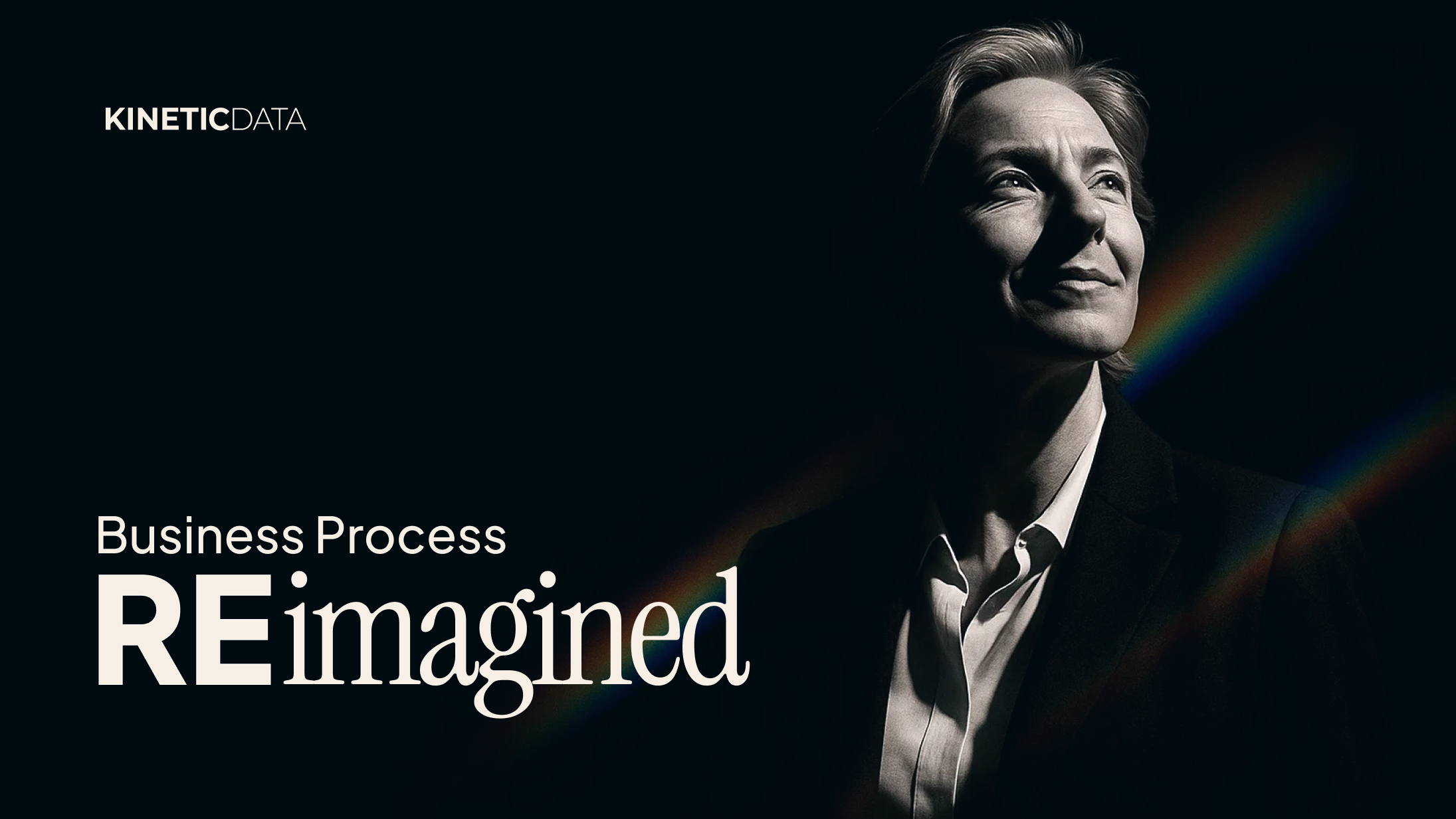What’s New at Kinetic: Building Smart in 2026
At Kinetic, we believe the future of Business Process Management isn’t bigger—it’s smarter.
You've probably noticed (what we're calling) the "logo-swap test" lately: all the AI ads in market sound identical no matter whose logo sits in the corner. "Let AI handle the busy work", "trust our...

You've probably noticed (what we're calling) the "logo-swap test" lately: all the AI ads in market sound identical no matter whose logo sits in the corner. "Let AI handle the busy work", "trust our agents", "hand over the work you don't want to do"... and so on.
The same thing happened with BPM platforms a decade ago. Every vendor promised "comprehensive automation," "unified orchestration," and "AI-powered intelligence." What they delivered? Expensive suites that trapped your AI inside their proprietary ecosystems, workflows that couldn't adapt, and vendor lock-in masquerading as innovation.
Meanwhile, inside most organizations, you'll find five portals, three bots, expensive BPM platforms that can't actually orchestrate across your systems, and zero flow. We can do better. With a pattern that keeps people in one unified experience while work orchestrates across every system you own—without betting your AI strategy on a single BPM vendor's roadmap.
 Experience Layer — the unified place people actually use.
Experience Layer — the unified place people actually use.
One place to request, approve, and track. No tool-hopping. Keep it familiar even as platforms change beneath it.
Agility Layer — the conductor that turns a request into a result.
Routes tasks across platforms, handles exceptions, and proves outcomes. This is orchestration, not just automation.
Core Systems — the platforms you connect and the shared facts they exchange.
Wire your HRIS, ITSM, Identity, Finance, Asset (and friends) once. Keep consistent fields (roles, entitlements, devices, cost centers, status) where reporting and AI can rely on them.
AI Layer — the brain with a full view that acts anywhere.
Learns from the organization, not a single product's silo—or a single BPM platform's data model. Recommends, detects, forecasts, or classifies—and then uses the Agility Layer to get work done in the right systems.
We're not anti-vendor AI. Vendor-native AI is great for local features inside a product. Enterprise AI belongs as a layer so it sees the whole and stays independent of any single roadmap—especially BPM platform roadmaps that want to lock your AI strategy inside their ecosystem.
Blind spots. A platform-bound model only sees its own data. That's fine for ticket summaries; it fails at cross-platform decisions (access bundles, device/software right-sizing, supplier onboarding). This is exactly why traditional BPM platforms with "built-in AI" can't deliver on their promises—their AI can only see what's happening inside their proprietary data model, not across your entire technology landscape.
Duplicate spend. Buy an “AI add-on” in three platforms and you’ll pay three times—for overlapping capabilities that can’t see each other.
Change drag. When your experience and AI are entangled with a backend—or locked inside a BPM platform—swapping that backend becomes expensive retraining and re-wiring. This is the vendor lock-in that traditional BPM created, now extended to your AI investments.
Inconsistent experience. People bounce between apps and bots. Adoption drops, tickets rise.
AI as a layer breaks that cycle: one experience, one conductor, the systems you already own, and a brain that isn't trapped inside any one of them—or inside a BPM vendor's proprietary framework. This is BPM Reimagined for the AI era.
Core Systems own the truth. Systems of record remain systems of record; the shared facts they expose are governed and auditable.
AI reads governed facts, not shadow copies. Use the shared fields you already trust (roles, entitlements, asset assignments, approvals).
Actions run through Agility. Every step is logged, permissioned, and reversible—because orchestration enforces policy.
No new back doors. Keep access controls and monitoring where they belong (Identity, logging, change management). The model respects your existing controls.
Pick one flow that touches multiple platforms—onboarding, vendor access, device & software provisioning, contractor offboarding.
Write the use case in one line. Trigger → “done” definition.
List 5–7 steps with the platforms each step touches and the existing data referenced.
Circle the steps that reference multiple platforms or create data used later elsewhere. Those are your decouple targets.
Wire Core Systems fields used in one circled step (read/write once, no re-typing).
Add one AI Play that shows up in the Experience Layer (not another tool):
Choose for me (Recommend) — suggest the best option/bundle/next step
Spot issues (Detect) — flag duplicates, risk, or missing info
Give me the ETA (Forecast) — predict date, delay, or effort
Send it to the right place (Classify & Route) — recognize intent and route
What people see: Auto-filled choices, inline hints, proactive status, or smart routing—inside the same interface they already use, without being forced into a BPM vendor's generic portal templates.
What you keep: Freedom to change a platform later without training everyone again or rewriting your AI—and without being held hostage by a BPM vendor's roadmap or pricing model.
We've put together a handy worksheet for you to use when integrating a decoupled-AI strategy into your organization.
Get the worksheet and watch a recent presentation here..
Adoption of the unified experience (fewer “where do I go?” tickets).
End-to-end cycle time for the chosen flow.
Change cost when you swap a platform (how much didn’t you have to redo?).
Exception rate before vs. after (AI Play + orchestration should reduce rework).
Boiling the ocean. Start with one flow and one AI Play. Ship a visible improvement in weeks, not quarters—not the 12-18 month BPM implementations that never deliver.
Chasing models. Chasing models. Your first wins won't come from picking the "perfect" LLM; they'll come from where AI sits and how it shows up for people.
Tool-driven debates. Lead with the layers, then map your current platforms into them. Your tools change; your pattern shouldn't. This is the mistake traditional BPM made—forcing you to adopt their tools and framework instead of orchestrating what you already have.
AI is powerful—until it’s trapped inside a single product or BPM platform. Put AI where it can see the enterprise and act anywhere, while people stay in a unified experience. That's how you unlock speed today and keep your choices tomorrow. This is BPM Reimagined: orchestration that respects your architecture, AI that isn't locked to vendor roadmaps, and workflows that adapt to organizational reality instead of breaking under it.

At Kinetic, we believe the future of Business Process Management isn’t bigger—it’s smarter.

IT support automation uses software workflows, rule engines, AI/ML, and integrations to automate...

Business process reimagined is the strategic renewal of how work gets done by combining modern digital...